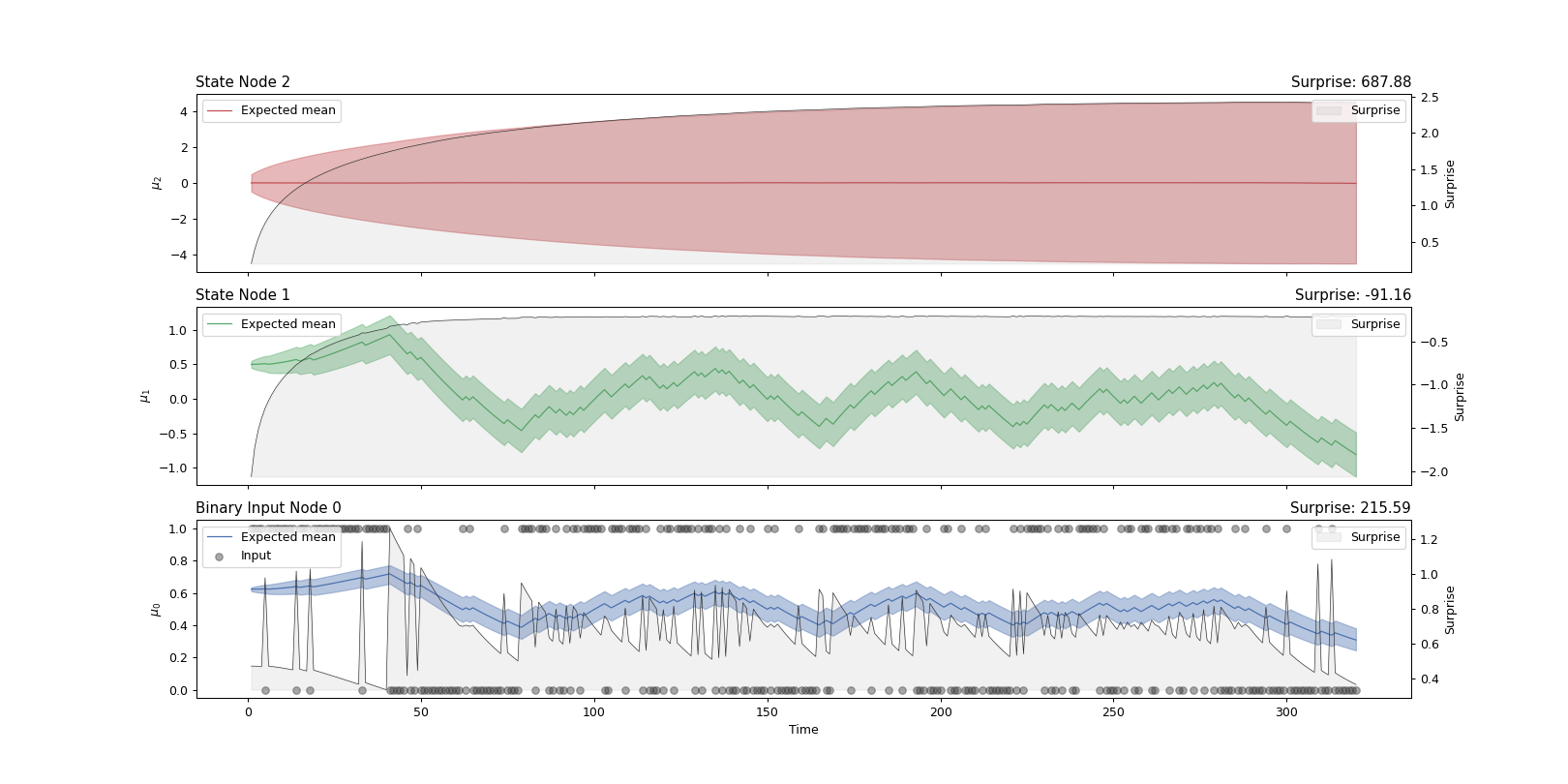pyhgf.plots.plot_trajectories#
- pyhgf.plots.plot_trajectories(network: Network, ci: bool = True, show_surprise: bool = True, show_posterior: bool = False, show_total_surprise: bool = False, figsize: Tuple[int, int] = (18, 9), axs: List | Axes | None = None) Axes[source]#
Plot the trajectories of the nodes’ sufficient statistics and surprise.
This function will plot the expected mean and precision (converted into standard deviation) and the surprise at each level of the node structure.
- Parameters:
- network
An instance of the main Network class.
- ci
Show the uncertainty around the values estimates (standard deviation).
- show_surprise
If True plot each node’s surprise together with sufficient statistics. If False, only the input node’s surprise is depicted.
- show_posterior
If True, plot the posterior mean and precision on the top of expected mean and precision. Defaults to False.
- show_total_surprise
If True, plot the sum of surprises across all nodes in the bottom panel. Defaults to False.
- figsize
The width and height of the figure. Defaults to (18, 9) for a two-level model, or to (18, 12) for a three-level model.
- axs
A list of Matplotlib axes instances where to draw the trajectories. This should correspond to the number of nodes in the structure. The default is None (create a new figure).
- Returns:
- axs
The Matplotlib axes instances where to plot the trajectories.
Examples
Visualization of nodes’ trajectories from a three-level continuous HGF model.
from pyhgf import load_data from pyhgf.model import HGF # Set up standard 3-level HGF for continuous inputs hgf = HGF( n_levels=3, model_type="continuous", initial_mean={"1": 1.04, "2": 1.0, "3": 1.0}, initial_precision={"1": 1e4, "2": 1e1, "3": 1e1}, tonic_volatility={"1": -13.0, "2": -2.0, "3": -2.0}, tonic_drift={"1": 0.0, "2": 0.0, "3": 0.0}, volatility_coupling={"1": 1.0, "2": 1.0}, ) # Read USD-CHF data timeserie = load_data("continuous") # Feed input hgf.input_data(input_data=timeserie) # Plot hgf.plot_trajectories();

Visualization of nodes’ trajectories from a three-level binary HGF model.
from pyhgf import load_data from pyhgf.model import HGF import jax.numpy as jnp # Read binary input u, _ = load_data("binary") three_levels_hgf = HGF( n_levels=3, model_type="binary", initial_mean={"1": .0, "2": .5, "3": 0.}, initial_precision={"1": .0, "2": 1e4, "3": 1e1}, tonic_volatility={"1": None, "2": -6.0, "3": -2.0}, tonic_drift={"1": None, "2": 0.0, "3": 0.0}, volatility_coupling={"1": None, "2": 1.0}, eta0=0.0, eta1=1.0, binary_precision = jnp.inf, ) # Feed input three_levels_hgf = three_levels_hgf.input_data(u) # Plot three_levels_hgf.plot_trajectories();
